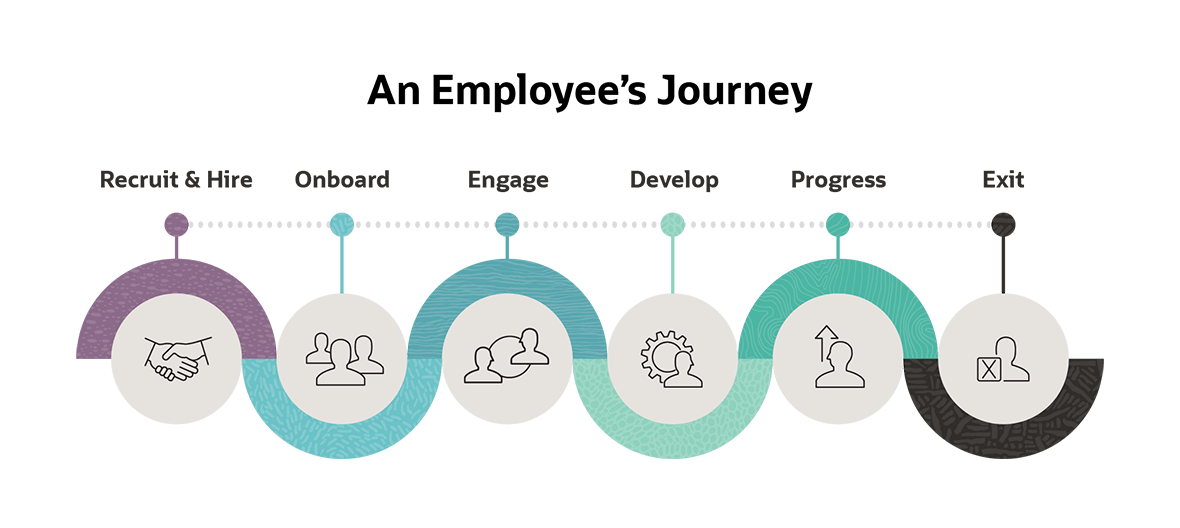Employee Experience: A Complete Guide for HR
Employee Experience: A Complete Guide for HR
-
May 4, 2024
- Author: AceNgage

Employee experience has emerged as a cornerstone of modern human resources (HR) strategy, shaping how companies attract, engage, and retain talent in a competitive business landscape. This guide delves deep into the various facets of employee experience, offering HR professionals comprehensive insights and practical strategies to enhance workplace satisfaction and productivity. By understanding and improving the employee experience, HR can profoundly impact overall organizational success.
Read More about engagement on our website.
Employee Experience Defined
Employee Experience vs. Employee Engagement
While often used interchangeably, employee experience and employee engagement are distinct concepts. Employee experience encompasses every interaction an employee has with the company, from the recruitment process through to their exit, while engagement is the emotional commitment the employee has to the company and its goals. Understanding this distinction is crucial for HR professionals as they design initiatives that foster a positive workplace environment and culture.
Read About Employee engagement at www.acengage.com
Components of a Great Employee Experience
A great employee experience is comprised of several key components:
Cultural Environment: The ethos and values that define the workplace atmosphere.
Technological Environment: The tools and platforms that employees use to perform their work efficiently.
Physical Environment: The actual, tangible workspaces where employees perform their duties.
The Employee Journey
Mapping the employee journey is akin to charting a course that anticipates potential touchpoints where HR can positively influence the employee’s perceptions and experiences. This journey includes significant phases such as onboarding, professional development, promotions, and eventual offboarding or retirement. Each phase offers unique opportunities for HR to enhance the employee experience by ensuring each interaction is positive, meaningful, and supportive.

Source – netsuite.com
Designing the Employee Experience Strategy
Aligning employee experience strategies with business objectives involves understanding both the needs of the employees and the goals of the organization. Creating personas can help HR professionals tailor experiences that meet diverse employee needs while also pushing forward business objectives. This dual focus ensures that employee satisfaction drives business success.
Workplace Environment and Culture
The workplace environment and culture are pivotal in shaping the employee experience. An inclusive, supportive, and engaging workplace can boost employee satisfaction significantly. Factors such as open communication, respect for diversity, and a positive work-life balance are crucial in cultivating an environment where employees can thrive.
Technology and Employee Experience
In today’s digital age, the right technology can enhance the employee experience by making work processes smoother and more efficient. From communication tools that foster collaboration across geographical boundaries to HR management systems that streamline administrative tasks, technology plays a critical role in shaping modern employee experiences. Additionally, the rise of remote work has underscored the importance of having robust technologies that support a dispersed workforce.
Learning and Development
Ongoing learning and development are vital components of a positive employee experience. Employees today expect their employers to support their career aspirations through continuous professional development. Personalized learning paths not only help employees achieve their career goals but also ensure that the organization develops a skilled and competent workforce ready to meet future challenges.
Feedback and Communication
Effective feedback mechanisms are essential for maintaining a positive employee experience. Regular, constructive feedback helps employees understand their performance and areas for improvement. Equally important is establishing transparent communication channels that encourage open dialogue and convey important organizational changes or decisions promptly and clearly.
Recognition and Reward Systems
A well-designed recognition and reward system can significantly enhance employee morale and loyalty. Recognizing employees for their hard work and contributions fosters a positive work environment and encourages continued excellence. Rewards can range from formal award programs to informal acknowledgements of a job well done.
Health and Well-being
The health and well-being of employees significantly impact their overall experience at work. Wellness programs that promote physical, mental, and emotional health can lead to higher productivity and reduced absenteeism. Moreover, addressing mental health openly and supportively is becoming increasingly important in modern workplaces.
Leadership and Management Practices
Leaders play a crucial role in shaping the employee experience. Their approach to management, ability to inspire, and the behaviors they model can significantly influence the workplace atmosphere and employee satisfaction. Training managers to be empathetic, supportive leaders can transform the entire employee experience.
Measuring Employee Experience
To effectively improve the employee experience, HR must be able to measure it. This involves identifying key performance indicators (KPIs) related to employee satisfaction, retention rates, and feedback scores. Advanced analytics and employee experience platforms can provide actionable insights that help refine strategies and improve outcomes.
Conclusion
In conclusion, enhancing the employee experience is a comprehensive endeavour that requires a strategic approach from HR. By focusing on the multiple aspects discussed in this guide—from the workplace environment to leadership and technology—HR professionals can create a more engaging, productive, and satisfying workplace. The journey to improving the employee experience is ongoing and evolving, but with the right strategies, it can lead to significant benefits for both employees and the organization.
